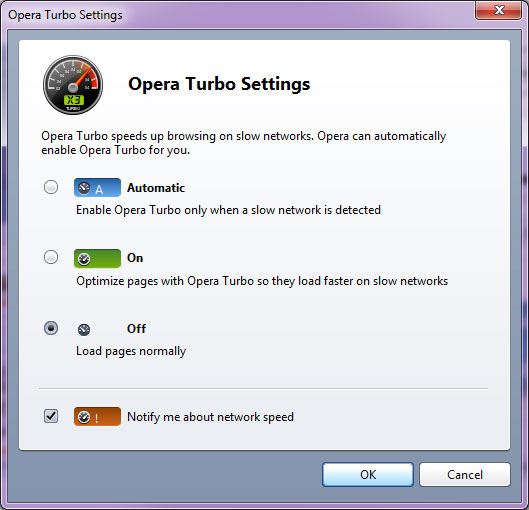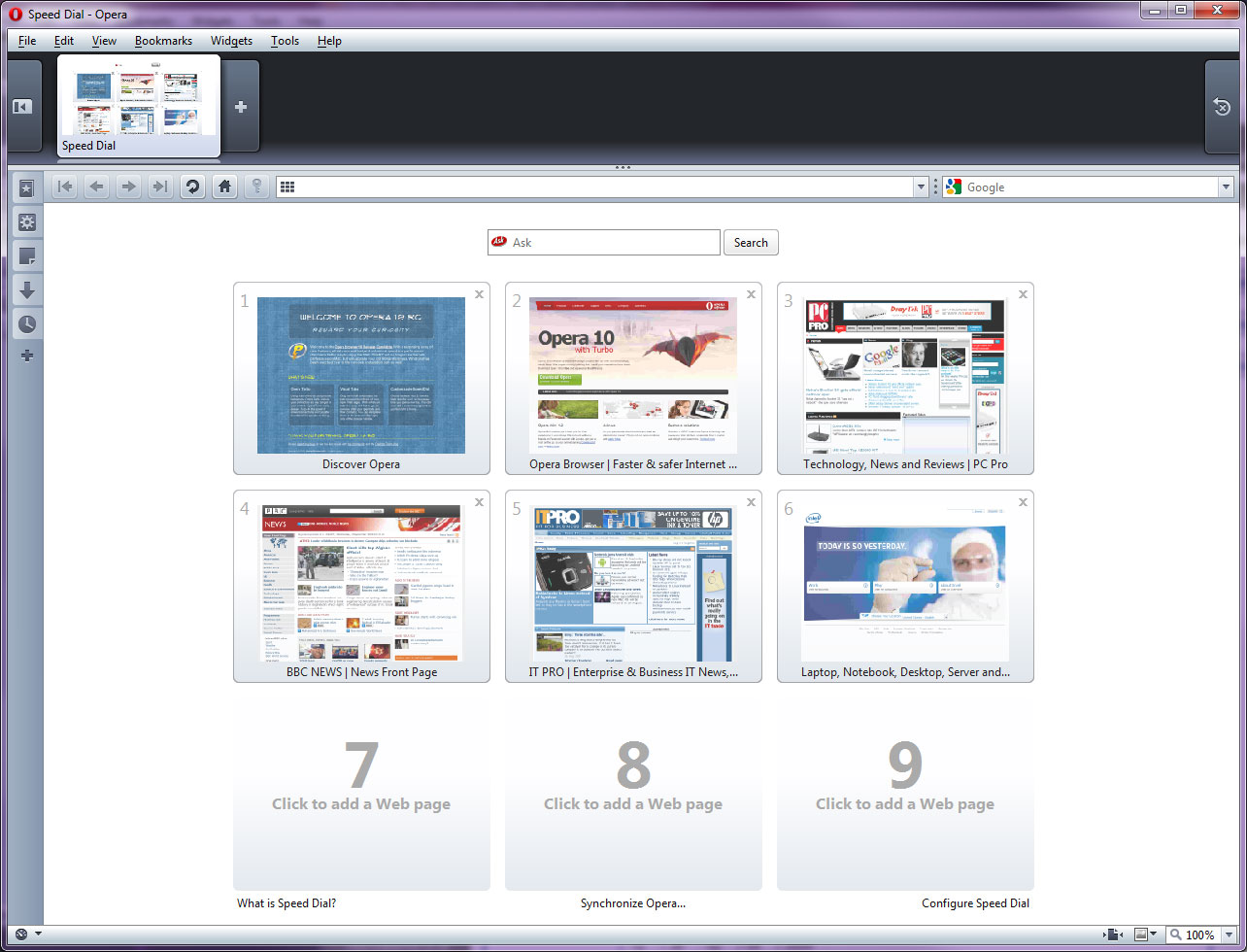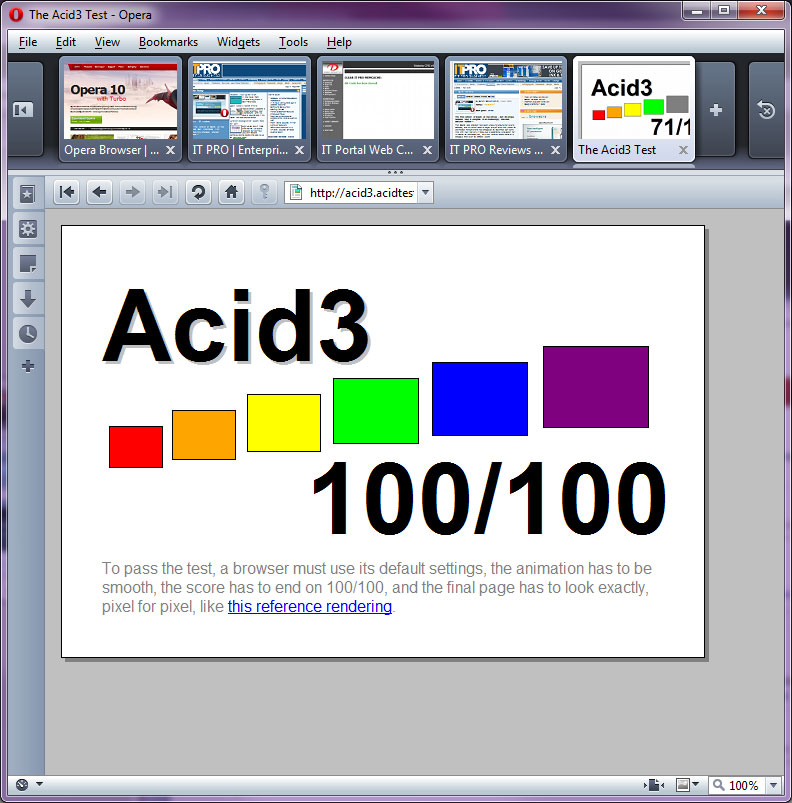Opera 10 review
The final version of Opera 10 has arrived. Can its unique features help it compete in an increasingly crowded browser market?

Opera brings itself up to date with the rest of the pack with a solid browser release offering a good mix of unique features and reasonable performance. However, its main appeal is likely to be to advanced users who have the desire for more technical detail and access to that left-of-field feature set. For everyone else, the more mainstream browsers will do fine.

The Opera web browser has been knocking around for over a decade, but it's never been a major player: over the years its estimated market share has struggled to top three per cent. And with now not only Firefox but also Chrome and Safari for Windows to compete with, this new version faces more of a struggle than ever to attract users.
But then Opera 10, which as with all browsers is downloadable for free, does offer some notable features that do distinguish it from its rivals. The headline addition is "Opera Turbo", which dynamically replaces online graphics with low-resolution versions to speed up browsing on slow connections, such as shared Wi-Fi networks. It can be enabled manually, or set to automatically kick in when Opera detects a slow link. For more information, check out our Need to Know: Opera Turbo" feature.

A second unique trick is the ability to expand the tab bar to show not just titles but thumbnail previews of open pages much like the taskbar previews in Windows 7. The "Speed Dial" navigation grid that appears in each new tab has been updated too: in previous versions of Opera it offered nine quick-access links, but in Opera 10 as in Safari you can customise the grid to show between four and 25 pages.

Opera 10 is also marketed as being "ready for the next generation of web applications", though it's still not the fastest browser: on our test system it took 2.9 sec to complete the SunSpider JavaScript benchmark, while Firefox 3.5.2 took 1.0 sec and Safari 4.0.3 blazed through in just 0.7 sec. Still, Opera is well ahead of Internet Explorer 8, which took 4.3 seconds.

And the browser does feature support for downloadable Web Fonts, as well as an impressive 100 per cent score on the challenging Acid3 CSS standards test. So you can be confident of seeing online content exactly as it was intended to be viewed.
Get the ITPro daily newsletter
Sign up today and you will receive a free copy of our Future Focus 2025 report - the leading guidance on AI, cybersecurity and other IT challenges as per 700+ senior executives
Darien began his IT career in the 1990s as a systems engineer, later becoming an IT project manager. His formative experiences included upgrading a major multinational from token-ring networking to Ethernet, and migrating a travelling sales force from Windows 3.1 to Windows 95.
He subsequently spent some years acting as a one-man IT department for a small publishing company, before moving into journalism himself. He is now a regular contributor to IT Pro, specialising in networking and security, and serves as associate editor of PC Pro magazine with particular responsibility for business reviews and features.
You can email Darien at darien@pcpro.co.uk, or follow him on Twitter at @dariengs.
-
 Westcon-Comstor and Vectra AI launch brace of new channel initiatives
Westcon-Comstor and Vectra AI launch brace of new channel initiativesNews Westcon-Comstor and Vectra AI have announced the launch of two new channel growth initiatives focused on the managed security service provider (MSSP) space and AWS Marketplace.
By Daniel Todd Published
-
 Third time lucky? Microsoft finally begins roll-out of controversial Recall feature
Third time lucky? Microsoft finally begins roll-out of controversial Recall featureNews The Windows Recall feature has been plagued by setbacks and backlash from security professionals
By Emma Woollacott Published
-
 The UK government wants quantum technology out of the lab and in the hands of enterprises
The UK government wants quantum technology out of the lab and in the hands of enterprisesNews The UK government has unveiled plans to invest £121 million in quantum computing projects in an effort to drive real-world applications and adoption rates.
By Emma Woollacott Published